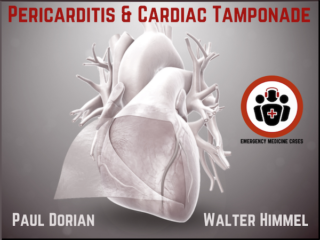ECG Cases 43 – ECG Interpretation in Shortness of Breath
In this ECG Cases blog we look at 10 patients with shortness of breath, and discuss how the ECG can be used to help diagnose cardiac, respiratory and metabolic emergencies. We discover that for STEMI/OMI vs subendocardial ischemia, we should look for STEMI(-)OMI, subacute OMI, and OMI in the presence of LBBB and RBBB, and consider the differential for diffuse ST depression with reciprocal ST elevation in aVR. For RV strain, acute vs chronic, we should look for signs of acute RV strain and chronic pulmonary hypertension. for low voltages we should consider pericardial effusion and other causes, and for hyperkalemia we should look for multiple signs of hyperkalemia as a guide for empiric calcium...



